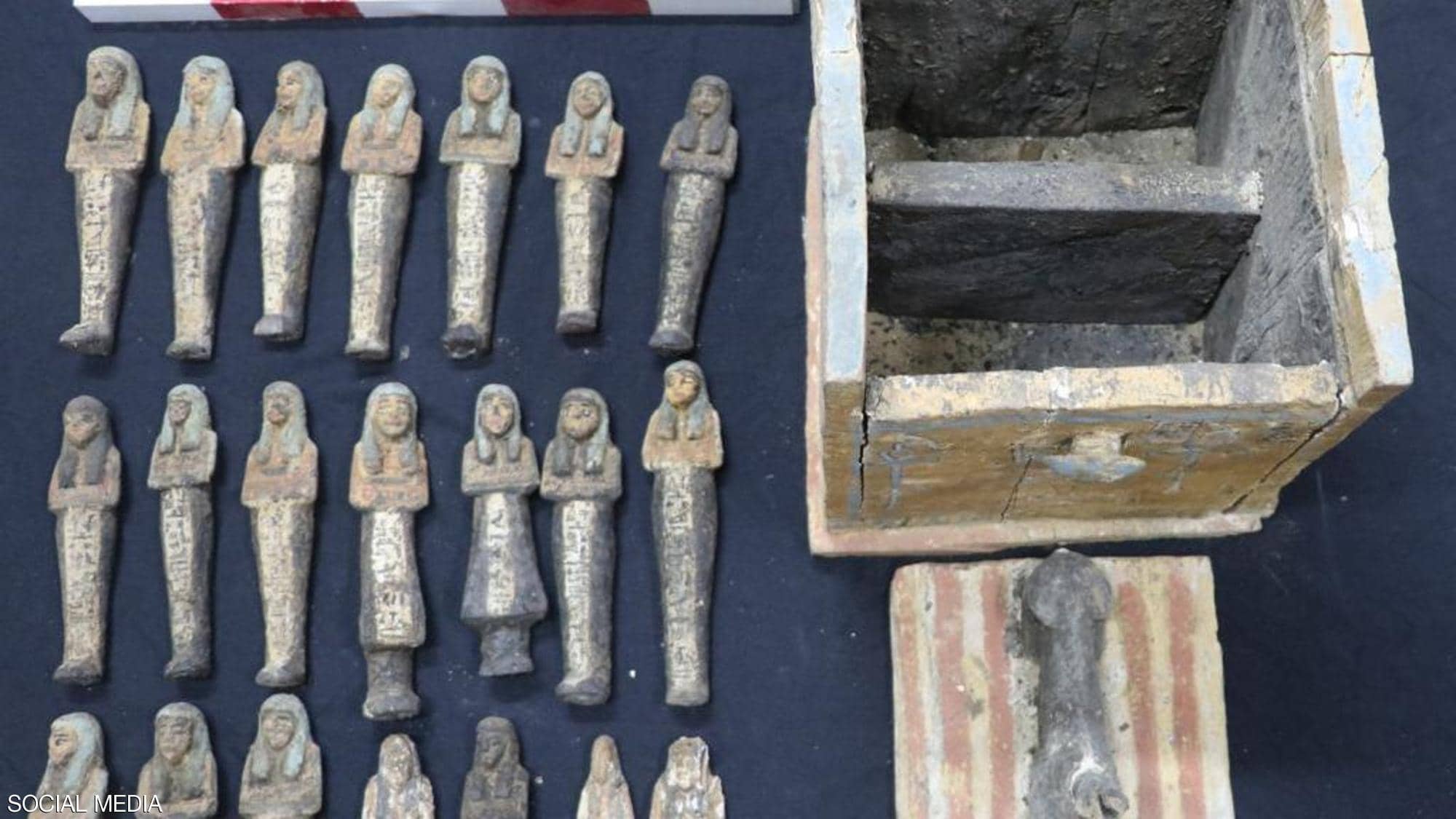Untouched antiquities and exceptional papyrus ... Egyptian Saqqara reveals a wonderful treasure
In a revelation describing the difference, a joint Egyptian mission working in the Saqqara antiquities area, next to the pyramid of King Tati, the first king of the Sixth Dynasty of the Old Kingdom, found important archaeological discoveries dating back to the ancient, modern and later ages.
Zahi Hawass, the Egyptian archaeologist and head of the mission, said that these discoveries will rewrite the history of this region, especially during the 18th and 19th dynasties of the modern state, which is the period in which King Tete was worshiped, and burial was at that time around his pyramid.
Hawass confirmed that the mission found the funerary temple of the Queen Naraat, the wife of King Tati, part of which was uncovered in the years prior to the mission, indicating that the mission also found the layout of the temple, in addition to 3 stores built of mud brick in the southeastern side of it. , To store offerings and tools that were used to revive the Queen's creed.
In addition, 52 wells were found, with depths ranging between 10 to 12 meters, with more than 50 wooden coffins from the modern state era, according to what was reported by the Facebook account of the Egyptian Cabinet.
This is the first time that coffins dating back 3,000 years have been found in the Saqqara region. These coffins are of a human form and are represented on their surface many scenes of the gods who were worshiped during this period, in addition to various parts of the texts of the Book of the Dead that help the deceased on his journey to the other world.
The mission found inside the wells a large number of archaeological artifacts and statues in the form of deities such as the deity Osir, Ptah, Sukkar, and Ozer, in addition to a unique discovery, where the mission found a papyrus up to 4 meters long and one meter wide, representing Chapter Seven Ten of the Book of the Dead, recorded on it the name of its owner (Bu-Khaa-Af).
The same name was found on 4 Ushabti statues, and a wooden coffin was found on the human body of the same person, in addition to many shabti statues made of wood and faience stone, from the era of the New Kingdom.
In addition to a set of wooden masks as well as the shrine of the god Anubis, the god of cemetery, statues in good condition were found for him, as well as many games that the deceased would have played with in the other world, such as the game (Cent) which is similar to chess currently, as well as the game of twenty, with a name written on it The person who was playing it.
Also found were many artifacts representing birds such as goose, a bronze ax indicating that its owner was one of the leaders of the army in the New Kingdom era, and many paintings inscribed with scenes of the deceased and his wife and hieroglyphic writings.
Zahi Hawass explained that this disclosure confirms that the Saqqara antiquities area was not used for burial during the Late Period only, but also in the modern state, as it proved the existence of many workshops that produce these coffins, which were purchased through the people, as well as mummification workshops. .
The mission studied the mummy of a woman, whose owner was found to be suffering from a disease known as "Mediterranean fever" or "swine fever", which is a disease that comes from direct contact with the animal and leads to a liver abscess, which is a chronic disease for life.
The mission also revealed a huge mud brick cabin dating back to the New Kingdom era, with a well up to 24 meters deep so far, whose end has not yet been reached, and it is expected to end with a burial chamber.
The floor of that cabin was paved with well-polished limestone blocks, and the upper part of the wellhead was covered with stones. Work is still ongoing, and Zahi Hawass believes that this well has not been reached by thieves, and it will be fully disclosed, and he confirms that this discovery is considered one of the most important archaeological discoveries for this year and will make Saqqara, along with other discoveries, an important tourist and cultural destination, and it will rewrite the history of Saqqara. In the era of the New Kingdom, in addition to emphasizing the importance of the cult of King Tati during the 19th Dynasty of the New Kingdom.





